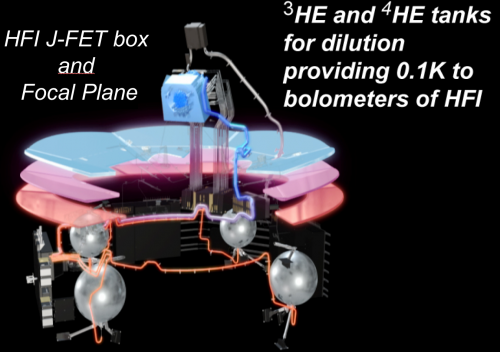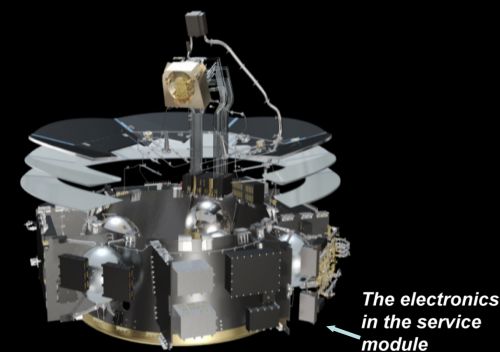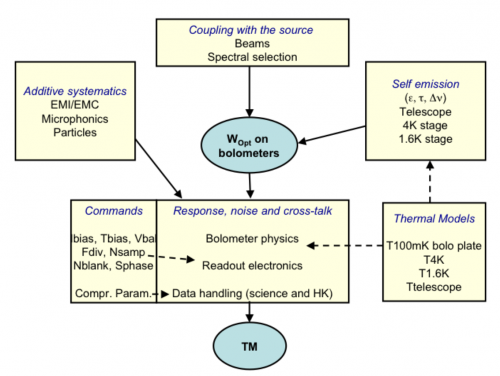Difference between revisions of "HFI design, qualification, and performance"
(→Cryogenics) |
(→Cryogenics) |
||
| Line 38: | Line 38: | ||
This entire section has been moved to [[HFI_cryogenics | this page]]. | This entire section has been moved to [[HFI_cryogenics | this page]]. | ||
| − | |||
| − | |||
| − | |||
| − | |||
| − | |||
| − | |||
| − | |||
| − | |||
| − | |||
| − | |||
| − | |||
| − | |||
| − | |||
| − | |||
| − | |||
| − | |||
| − | |||
| − | |||
| − | |||
| − | |||
| − | |||
| − | |||
| − | |||
| − | |||
| − | |||
| − | |||
| − | |||
| − | |||
| − | |||
| − | |||
| − | |||
| − | |||
| − | |||
| − | |||
| − | |||
| − | |||
| − | |||
| − | |||
| − | |||
| − | |||
| − | |||
| − | |||
| − | |||
| − | |||
| − | |||
| − | |||
| − | |||
| − | |||
| − | |||
| − | |||
| − | |||
| − | |||
| − | |||
| − | |||
== Cold optics == | == Cold optics == | ||
Revision as of 18:16, 25 January 2013
THIS SECTION IS CURRENTLY IN A VERY PRELIMINARY FORM. It is intended to provide an overview of the instrument and of its different sub-systems. Two papers that include and detail this information are available: LAMARRE, Jean-Michel, PUGET, Jean-Loup et 93 co-auteurs, " Planck pre-launch status: The HFI instrument, from specification to actual performance", Astronomy and Astrophysics, Volume 520, id.A9 (20 pages, A&A Homepage), 09/2010. and Planck-HFI Core Team and 165 co-authors. " Planck early results. IV. First assessment of the High Frequency Instrument in-flight performance", Astronomy & Astrophysics, Volume 536, id.A4 (A&A Homepage) 12/2011." Additional detailed information potentially useful for the use of the HFI data will be included into this section or annexed to it.
Contents
HFI high level description and Architecture[edit]
(Lamarre/Pajot)
The HFI instrument is designed around 52 bolometers. Twenty of the bolometers (spider-web bolometers or SWBs) are sensitive to total power, and the remaining 32 units are arranged in pairs of orthogonally-oriented polarisation-sensitive bolometers (PSBs). All bolometers are operated at a temperature of ~0.1 K by mean of a space qualified dilution cooler coupled with a high precision temperature control system. A 4He-JT provides an active cooling for 4 K stages using vibration controlled mechanical compressors to prevent excessive warming of the 100 mK stage and minimize microphonic effects in the bolometers. Bolometers and sensitive thermometers are read using AC-bias scheme through JFET amplifiers operated at ~130 K that provide high sensitivity and low frequency stability. The HFI covers six bands centred at 100, 143, 217, 353, 545 and 857 GHz, thanks to a thermo-optical design consisting of three corrugated horns and a set of compact reflective filters and lenses at cryogenic temperatures.
The whole satellite is organized to provide thermal transitions between its warm part exposed to the sun and earth radiation, and the focal plane instruments that include the cold receivers (Sections XXX1 and XXX2). The various parts of the HFI are distributed among three different stages of the satellite in order to provide each sub-system an optimal operating temperature. The "warm" parts, including nearly all the electronics and the sources of fluids of the 4K and 0.1K coolers, are attached and thermally linked to the service module of the satellite. The first stage of the preamplifiers is attached to the back of the passively cooled telescope structure. The focal plane unit is attached to the 20K stage cooled by the sorption cooler. This is detailed in (XXX2).
The telescope and horns selects the geometrical origin of photons. They provide a high transmission efficiency to photons inside the main beam, while photons coming from the intermediate and far-side lobes have very low probability of being detected. This essential characteristics is known by a complex process mixing ground measurements of components (horns, reflectors), modelling the shape of the far side lobes, and measuring in-flight bright sources, especially planets.
The filters and bolometers define the spectral responses and absolute optical efficiency, that will be known mostly from ground based measurements performed at component, sub-system and system levels reported in this document. The relations between spectral response and geometrical response will also be addressed.
Photons absorbed by a bolometer include the thermal radiation emitted by the various optical devices: telescope, horns and filters. They are transformed in heat that propagates to the bolometer thermometer and influence its temperature which is itself measured by the readout electronics. Temperatures of all these items must stable enough not to contaminate the scientific signal delivered by the bolometers. How this stability is reached is described in section 2.4.1_cryogeny.
The bolometer temperature depends also on the temperature of the bolometer plate, on the intensity of the biasing current and on any spurious inputs, such as cosmic rays and mechanical vibrations. Such systematics are included in the list of section 2.4.1._systematics.
Since the bolometer thermometer is part of an active circuitry that also heats it, the response of this system is complex and has to be considered as a whole. In addition, due to the modulation of the bias current and to the sampling of the data, a complex time response is expected, which modifies the beam shape resulting from the scanning of point sources. Section 2.4.1._time response is dedicated to the description of the time response.
Figure 2.4.1.1_HFI signal formation: Logic of the formation of the signal in HFI. This is an idealized description of the physics that takes place in the instrument. The optical power that is absorbed by the bolometers comes from the observed sky and from the instrument itself. The bolometers and readout electronics, acting as a single and complex chain, transform this optical power in data that is compressed and transmitted for science data reduction.
Cryogenics[edit]
(F .Pajot)
This entire section has been moved to this page.
Cold optics[edit]
(Lamarre)
This entire section has been moved to this page.
Detection chain[edit]
(Francesco Piacentini)
This entire section has been moved to this page.
Operations[edit]
(Vibert)
All satellite operations including the HFI instrument ones are under ESA MOC responsibilty for obvious safety reasons.The HFI instrument operations are nevertheless delegated to the HFI Instrument Operations Team (IOT) built from the HFI consortium and under the HFI Principal Investigator responsibility. Instrument management, operations and parameter monitoring are thus prepared and controlled by the IOT and serviced by MOC either in near real time during the DTCP or uploaded in the satellite mission timeline for defered execution. The HFI instrument health and science data quality has been monitored daily by the IOT from launch till the end of the HFI extension mission phase. Apart from ground based tests, different operations phases did occur:
- 14/05/2009-18/05/2009 Launch Early Operational Phase
- 18/05/2009-09/07/2009 Commissioning Phase. The operations during this phase were under ESA's Planck Project responsibilty. The main HFI activities have been functional tests of the instrument and its cooldown till 100 mK. Given the performance, the helium flow has been set to the minimal one giving an End Of Life estimation second half of January 2012.
- 10/07/2009-12/08/2009 Calibration and Performance Verification Phase. The operations during this phase were under ESA's Planck Science Office responsibilty. The main HFI operations have been performance tests and activities to mesure the effects of several systematics. The only instrument failure happened the 6th of August were the electronic part of the 4K cooler has been switched off probably due to a major cosmic particle. It has to be noted that no tuning of the HFI parameters have been executed in flight till the end of the full HFI mission, excepted in December 2009 for an adjustment of the on-board numerical compression parameters.
- 12/08/2009-28/11/2010 HFI Nominal mission
- 28/11/2010-13/01/2012 HFI Extended mission
- 13/01/2012-(to be continued) LFI "only" extension phase
This page lists the events which have or might have affected the data stability.
Summary[edit]
(Lamarre) here remind worse sytematics and point to DPC Summary of sucess and limitations. JML. Link to early HFI in flight perf.
Annexes[edit]
(Vibert)
This page lists all annexes related to the HFI design, qualification and performance.
(Planck) High Frequency Instrument
Junction Field Elect Transistor
European Space Agency
[ESA's] Mission Operation Center [Darmstadt, Germany]
Instrument Operation Team
Daily Tele-Communication Period
(Planck) Low Frequency Instrument
Data Processing Center


